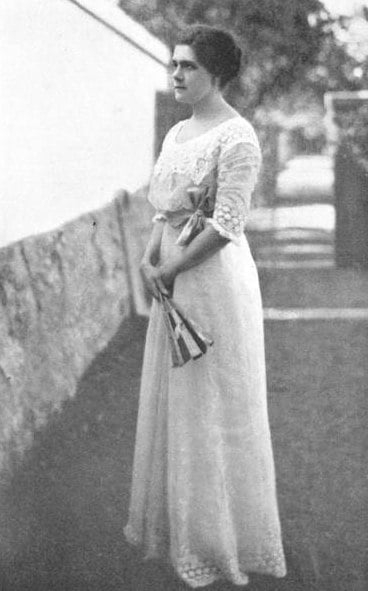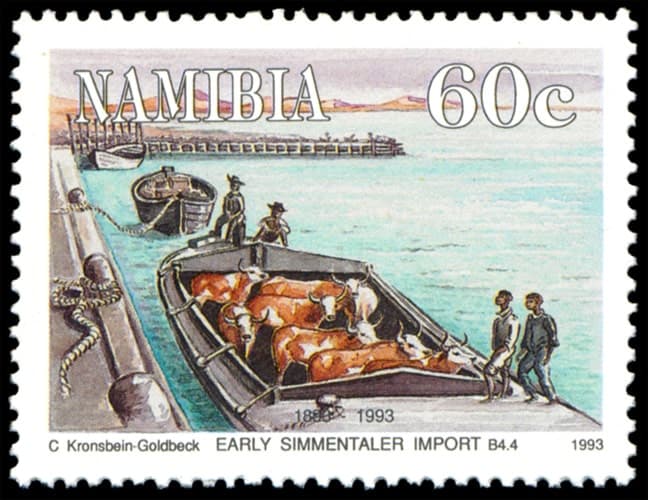The Order of Hildegard is a military decoration which was awarded by Imperial Germany for just a brief period of time and exclusively in the colony of German South West Africa. This order became the only officially recognized cloth variety of the Iron Cross.
At the start of the First World War in August 1914 Emperor Wilhelm II of Germany decided to reintroduce the Iron Cross in recognition of bravery and valour on the battlefield. He thus revived a tradition of his royal Prussian ancestors. King Friedrich Wilhelm III of Prussia had first instituted the Iron Cross, in three classes, for the duration of the Napoleonic Wars. King Wilhelm I brought back the medal in 1870 for the Franco-Prussian War.
When Emperor Wilhelm II reintroduced the Iron Cross at the start of the First World War he also authorized the commanders of the Imperial armies in the German colonies to award the decoration on his behalf.
In German South West Africa the first major battle was fought on 26 September 1914 at Sandfontein. The Schutztruppe, even though outnumbered by far, was able to defeat the South African Union troops. After the battle, Schutztruppe Commander Lieutenant Colonel Joachim von Heydebreck suggested to the Governor, Dr. Theodor Seitz, to award the Iron Cross to several of his men.
However, because of the war the German colony was cut off from the motherland. A temporary solution had to be found until the medals would be sent from Germany. At that time the colony had no factory which could have made provisional medals. Therefore the governor’s spouse, Hildegard Seitz, proposed to award a provisional decoration made from cloth. This variety of the Iron Cross could be made by the ladies of the Women’s Division of the German Red Cross in the Colonies, she said, and it could be sewn directly onto the uniform.
The suggestion was accepted and a decree on awarding the provisional decoration, the 'black cross with a white border ', was issued on 18 October 1914. Among the troops the handiwork was soon known as the Order of Hildegard. According to the decree it was a one-class decoration for officers as much as all other ranks. When awarding the 'medal' no difference between first and second class was made.
The first batch of Hildegard medals was awarded on 22 October 1914, the birthday of Empress Auguste Viktoria. Most of the 42 recipients were members of the 2nd regiment which had fought so valiantly at Sandfontein. The next list of 37 recipients (mostly from the 1st and 3rd regiment) was published in Aus on 27 January 1915, the birthday of Emperor Wilhelm II. It is not known how many others were awarded the Order of Hildegard because the relevant documents in the archives of Potsdam were damaged during the Second World War.
The two lists of names mentioned were drawn up on instruction of Lieutenant Colonel von Heydebreck who was tragically killed in an accident when new rifle grenades were tested in November 1914. His successor as Commander of the Schutztruppe in German South West Africa, Victor Franke, decided not to continue with the awarding of the Order of Hildegard but rather with the proper Iron Cross instead.
In German South West Africa the Schutztruppe surrendered to the superior strength of the South African troops on 9 July 1915 in the vicinity of Otavi. Active officers and men were taken to the internment camp at Aus. South African soldiers who were on guard when the Schutztruppe soldiers were moved from Otavifontein noticed the extraordinary decoration on some of the uniforms. What they saw was a white-rimmed black cross made from cloth - the provisional flash for the Iron Cross.
After the First World War the German military authorities replaced the Order of Hildegard with the Iron Cross 2nd class. The provisional decoration faded into obscurity until it was shown to the public for the first and only time at a colonial exhibition, held in Dresden in 1939.




SUBMIT YOUR COMMENT